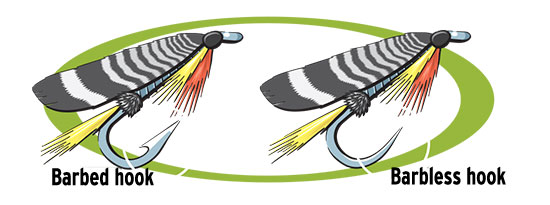Catch and release fishing tips
Releasing the fish you catch can help sustain and build the population of wild fish. Here are a few tips for ensuring fish have the best chance of survival.

Use barbless hooks or flatten the barb on the hook before using a fly for the first time. This makes the hook much easier to remove and lessens the potential injury to the fish’s mouth.

Use either needle-nose pliers or forceps to gently remove the hook from the fish’s mouth.

If the fish has swallowed the hook, or if the hook is set too deeply, cut the line and release the fish. The hook will dissolve over time without harm to the fish.
If the hook is in the gills, the throat or an artery, the fish’s chances of survival are greatly reduced. If it’s legal, keep the fish. Also, if a fish is bleeding, keep it if it’s legal to do so.

Minimize the amount of time the fish is out of the water. Once the hook is removed or the line is cut, gently hold the fish in the water, pointing upstream, until it can swim away on its own.
I love fishing with my grandpa and I’ll bet he will love this tip cause he loves nature and tries to make the fish feel no pain at all.
my bro cought a brow on a fly the other day
and a 2 pound brown the day befor!!!
i just cought a 17 pound king on lake Ontario yesterday!!!
I think that these suggesttions are only for beginners really, I go fishing quite often, but, I would not follow these rules, but that is just my opinion.
to stop it from wiggiling squese its gills together
you NEED gloves when handling sunfish
Instead of using gloves, just wet your hands.Circle hooks also help because it hooks on the side of the mouth.
one kind of fish buries and starves itself if you release it
this is about sport fishing isnt it for eagle scout i need to know how to prepare it to eat